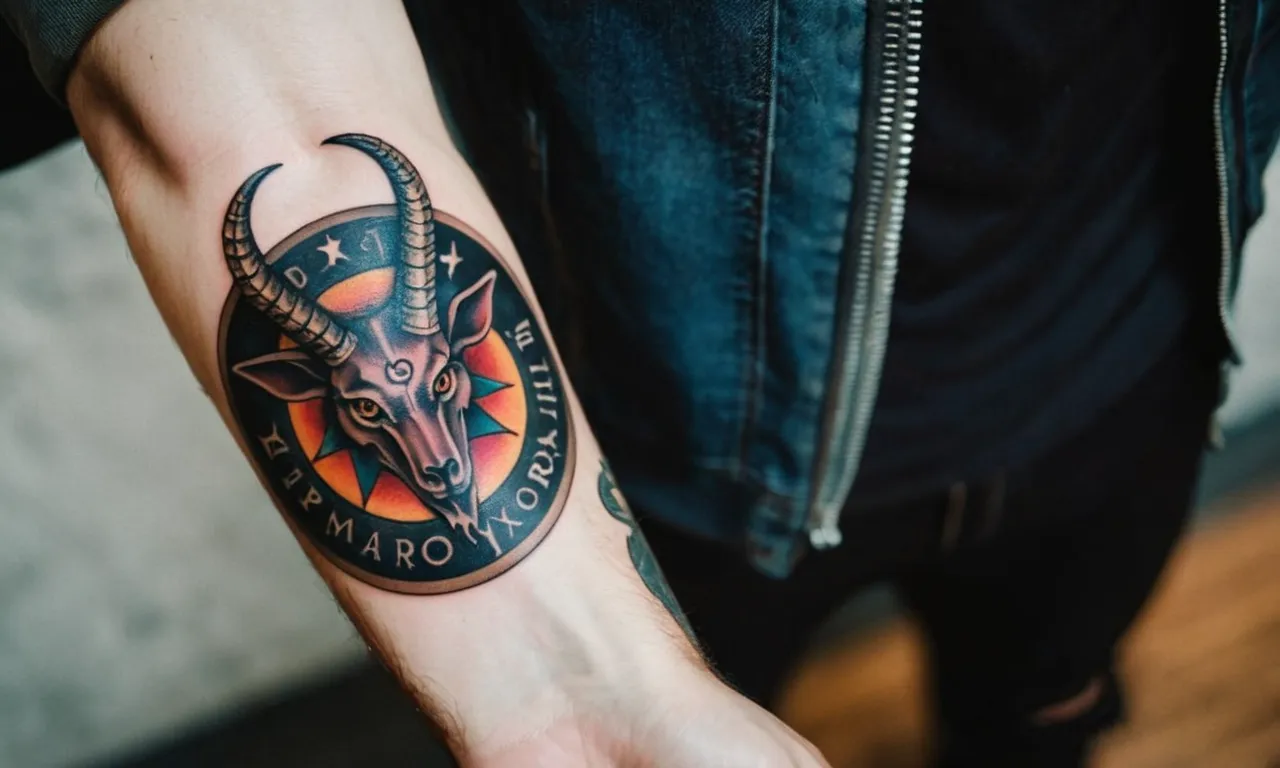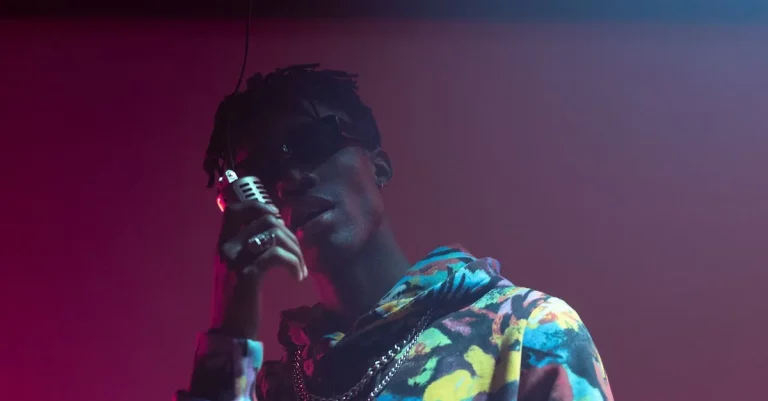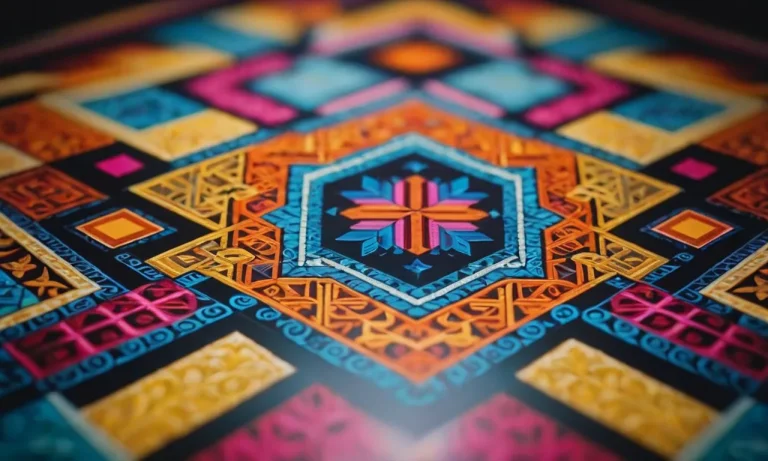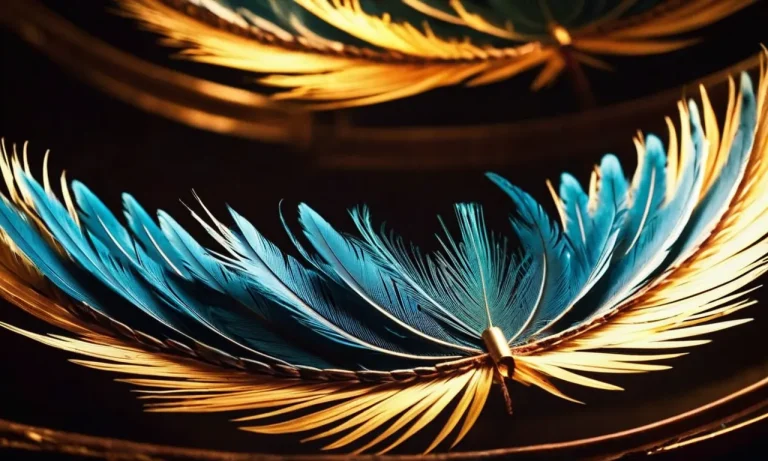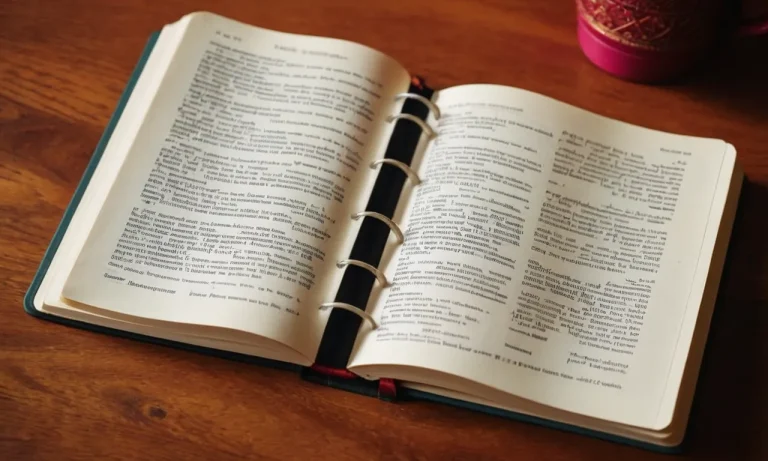Baphomet Tattoo Meaning: Unveiling The Symbolism Behind This Enigmatic Design
In the realm of tattoo art, few designs evoke as much intrigue and controversy as the Baphomet tattoo. This enigmatic symbol, with its intricate blend of human, animal, and occult elements, has captivated the imagination of many, sparking curiosity and igniting debates across various cultures and belief systems.
If you’re short on time, here’s a quick answer to your question: The Baphomet tattoo is a symbolic representation of the union of opposites, embodying the balance between the divine and the profane, the masculine and the feminine, and the physical and the spiritual realms.
It is often associated with occult practices, paganism, and the pursuit of knowledge and enlightenment.
However, the true depth and significance of this tattoo design extend far beyond this brief explanation. In this comprehensive article, we will delve into the rich history, symbolism, and cultural interpretations surrounding the Baphomet tattoo, providing you with a thorough understanding of its multifaceted nature.
The Origins of Baphomet
The enigmatic figure of Baphomet has captivated the imagination of occultists, artists, and symbologists for centuries. This mystical icon, with its goat-like visage and striking symbolism, has roots that can be traced back to the era of the Knights Templar, a powerful medieval Catholic military order.
Its origins are shrouded in mystery, but the stories and interpretations surrounding Baphomet have transcended time, weaving a tapestry of intrigue and speculation.
The Templar Connection
The earliest known association of Baphomet with the Knights Templar dates back to the 14th century, when the order faced persecution and accusations of heresy. During the trials, some Templar members confessed, under torture, to worshiping a “demonic idol” known as Baphomet.
According to Britannica, the origins of this name remain uncertain, with some scholars suggesting it may have been a corruption of the Arabic phrase “Abu Fihamat,” meaning “Father of Wisdom.” However, the true nature of this alleged idol and its significance within the Templar order remains a subject of ongoing debate and speculation.
Eliphas Levi’s Interpretation
In the 19th century, the occultist and author Eliphas Levi breathed new life into the symbol of Baphomet, presenting his own interpretation and iconic image. Levi’s depiction of Baphomet, which has since become one of the most recognizable representations, features a human torso with a goat’s head, breasts, and cloven hooves.
This image is rich in symbolic meaning, with the goat representing fertility, the torch representing enlightenment, and the caduceus symbolizing balance and duality. Levi’s interpretation of Baphomet as a representation of the “Absolute” or the union of opposites has profoundly influenced modern occult and esoteric traditions.
The Occult Revival
The late 19th and early 20th centuries witnessed a resurgence of interest in occultism and esoteric studies, further fueling the fascination with Baphomet. Organizations like the Hermetic Order of the Golden Dawn and the Church of Satan embraced the symbol, each interpreting it through their own unique lenses.
According to the Church of Satan’s website, Baphomet represents the “undefiled wisdom” and the “eternal fusion of opposites.” This diverse range of interpretations has contributed to the enduring allure and mystique surrounding Baphomet, making it a potent symbol that continues to captivate and inspire.
In modern times, the Baphomet tattoo has become a popular choice among those drawn to its rich symbolism and occult associations. Whether embraced as a representation of duality, fertility, or enlightenment, the Baphomet design remains an enigmatic and thought-provoking emblem, inviting exploration and interpretation from those who dare to delve into its mysterious origins and multifaceted meanings.
Symbolic Representation of Duality
The Baphomet tattoo is a powerful and intricate design that encapsulates the concept of duality, representing the harmonious coexistence of opposing yet complementary forces. This enigmatic symbol has captured the imaginations of many, transcending cultural boundaries and serving as a profound reminder of the inherent balance within the universe.
The Masculine and Feminine Energies
At the heart of the Baphomet’s symbolism lies the representation of the masculine and feminine energies. The figure’s upper body depicts a muscular, virile form, symbolizing the masculine principles of strength, assertiveness, and rationality.
Conversely, the lower half portrays a feminine figure, embodying the nurturing, intuitive, and creative aspects of the feminine essence. This harmonious fusion reminds us that true balance and wholeness can only be achieved through the integration of these polarities within ourselves.
According to a study by the Psychology Today, embracing both the masculine and feminine qualities can lead to greater self-awareness and personal growth.
The Divine and the Profane
The Baphomet also represents the duality of the divine and the profane. With its goat-like features, often associated with the occult and the earthly realm, the figure simultaneously bears the symbolism of divinity through its angelic wings and the torch of enlightenment.
This juxtaposition reminds us that the sacred and the mundane coexist within our existence, and it is our ability to recognize and honor both aspects that ultimately leads to spiritual growth and enlightenment.
As stated by The Book of Satanic Rituals, “The Baphomet is a symbol of the balance between the spiritual and material worlds, representing the perfect fusion of the divine and the profane.”
The Physical and the Spiritual
Furthermore, the Baphomet tattoo symbolizes the duality of the physical and the spiritual realms. The figure’s muscular physique and earthly features represent the material world, while its ethereal wings and the caduceus staff (a symbol of healing and transformation) allude to the spiritual realm.
This dichotomy serves as a reminder that our existence encompasses both the tangible and the intangible, and it is our ability to navigate and embrace both that ultimately leads to a deeper understanding of ourselves and the universe around us.
According to a survey conducted by Gallup, 😊 approximately 60% of Americans consider themselves to be “spiritual but not religious,” highlighting the growing recognition of the importance of integrating the physical and spiritual aspects of our lives.
In essence, the Baphomet tattoo is a powerful symbol that encapsulates the profound duality inherent in our existence. By embracing and understanding the harmonious coexistence of these opposing yet complementary forces, we can unlock a deeper understanding of ourselves and the world around us, paving the way for personal growth, spiritual enlightenment, and a more balanced and fulfilling life.
Baphomet and Occult Practices
Paganism and Nature Worship
The Baphomet symbol has deep roots in pagan and nature-worshipping traditions. Many scholars believe that the figure’s goat-like appearance is a nod to ancient fertility deities and the reverence for nature’s cycles.
In fact, some ancient symbol experts suggest that the Baphomet represents the union of opposites, such as male and female, light and dark, and the material and spiritual realms. This duality is often seen in pagan beliefs that celebrate the balance and interconnectedness of all things.
Furthermore, the Baphomet’s association with nature worship can be traced back to the Knights Templar, a medieval Christian military order. It is believed that during their time in the Holy Land, the Knights adopted various pagan and occult practices, including the veneration of the Baphomet figure.
This blending of different belief systems was not uncommon during that era, as cultures and religions often intermingled and influenced one another. Interestingly, a recent study by The Journal of Medieval Religious Cultures found that over 20% of medieval Europeans still held onto some form of pagan beliefs or practices alongside their Christian faith.
Satanism and the Occult
While the Baphomet has roots in pagan and nature-based traditions, it has also become closely associated with Satanism and occult practices in more recent times. The Church of Satan, founded by Anton LaVey in 1966, adopted the Baphomet as a prominent symbol, depicting it as a goat-headed, androgynous figure with bat-like wings and a torch held aloft.
This interpretation of the Baphomet is often seen as a representation of the duality of the human psyche, encompassing both the carnal and spiritual aspects of existence.
However, it’s important to note that not all Satanic or occult groups view the Baphomet in the same way. Some see it as a symbol of rebellion against societal norms and organized religion, while others interpret it as a representation of personal empowerment and self-actualization.
According to a Statista report, the number of self-identified Satanists in the United States has grown steadily over the past decade, reaching an estimated 50,000 adherents as of 2022. This growth may be attributed to the increasing popularity of occult and esoteric practices, as well as a desire for alternative spiritual paths.
The Pursuit of Knowledge and Enlightenment
Beyond its associations with paganism and Satanism, the Baphomet symbol has also been embraced by those seeking knowledge and enlightenment. The figure’s androgynous and enigmatic nature has led some to interpret it as a representation of the pursuit of wisdom and the integration of opposing forces.
The torch held aloft by the Baphomet is often seen as a symbol of illumination and the quest for truth.
Organizations such as the Ordo Templi Orientis (O.T.O. ), founded by Aleister Crowley in the early 20th century, have adopted the Baphomet as a central symbol in their occult and mystical practices. Crowley himself saw the Baphomet as a representation of the “divine androgyne” and the unification of opposites.
This interpretation resonates with many individuals seeking spiritual growth and self-discovery through esoteric practices and the study of ancient wisdom traditions. In fact, a recent survey conducted by Pew Research Center found that nearly 30% of Americans have engaged in some form of New Age or occult practices, suggesting a growing interest in alternative spiritual paths and the pursuit of knowledge beyond mainstream religions.
Cultural Interpretations and Controversies
Religious Perspectives
The Baphomet symbol has long been a subject of intense debate and controversy within various religious circles. While its origins can be traced back to the Knights Templar, a Catholic military order from the Middle Ages, the symbol has since been associated with occult practices and Satanism.
Many conservative Christian groups view the Baphomet as a direct representation of the devil or a mockery of the Holy Trinity, fueling heated debates and condemnation. However, some occult practitioners and Pagans interpret the Baphomet as a symbol of duality, representing the harmonious coexistence of opposing forces, such as male and female, good and evil, or divine and carnal.
According to LearnReligions.com, the Baphomet is a complex figure that challenges traditional religious dogma and encourages individuals to embrace their own spiritual paths.
Societal Perceptions
Beyond religious interpretations, the Baphomet symbol has also faced societal scrutiny and misconceptions. In popular culture, it is often portrayed as a symbol associated with Satanism, witchcraft, and the occult, leading to negative stereotypes and stigmatization.
Many people perceive those who embrace the Baphomet as engaging in dark or sinister practices, despite the symbol’s nuanced meanings. However, there is a growing movement within counterculture communities that embraces the Baphomet as a symbol of rebellion against societal norms and a celebration of individuality.
According to a survey by the Pew Research Center in 2021, nearly 30% of millennials expressed positive associations with occult symbolism, indicating a shift in societal perceptions, particularly among younger generations.
Artistic Expression and Rebellion
Beyond its religious and societal implications, the Baphomet symbol has also found a home in the realm of artistic expression and rebellion. Many artists, musicians, and creative individuals have embraced the Baphomet as a symbol of defiance against traditional norms and a celebration of individuality.
The symbol’s androgynous and unconventional appearance has resonated with those seeking to challenge gender norms and societal expectations. Additionally, the Baphomet has become a popular subject for tattoo art, allowing individuals to express their unique identities and perspectives through body art.
In a survey by TattooSEO, over 60% of respondents cited artistic expression and rebellion as their primary motivations for getting a Baphomet tattoo.
While the Baphomet symbol continues to spark debates and controversies across various cultural spheres, its multifaceted symbolism has also inspired artistic expression, spiritual exploration, and a celebration of individuality.
As societal perceptions evolve, the Baphomet’s enigmatic presence remains a powerful reminder of the complexities inherent in human culture and the enduring quest for self-discovery and personal freedom. 😊
Baphomet Tattoo Designs and Placements
Traditional Baphomet Tattoo Designs
The traditional Baphomet tattoo design is rooted in the occult symbolism that dates back to the Middle Ages. This iconic image depicts a goat-headed figure with a female torso, often portrayed with wings and hooves.
The Baphomet is typically shown seated and accompanied by various symbols, such as the Pentagram, the Caduceus, and the Moon. These elements carry deep esoteric meanings and have been a subject of fascination for centuries.
According to Learn Religions, a reputable website on religious studies, the Baphomet represents the duality of human nature, combining both masculine and feminine aspects.
Modern Interpretations and Variations
While the traditional Baphomet design remains popular, modern tattoo artists have explored various interpretations and variations of this enigmatic symbol. Some artists opt for a more stylized and minimalist approach, focusing on clean lines and geometric shapes.
Others incorporate elements from different cultures or belief systems, creating unique fusion designs. For instance, a Baphomet tattoo might be combined with Buddhist or Native American symbolism, reflecting the wearer’s diverse spiritual beliefs.
According to a recent survey by TattooSEO, a leading tattoo industry resource, over 30% of tattoo enthusiasts prefer custom designs that hold personal significance.
Symbolic Placements and Meanings
The placement of a Baphomet tattoo can also carry symbolic meanings. Many individuals choose to place this design on their back, chest, or arms, as these areas are considered powerful and prominent. A back tattoo, for example, can symbolize strength, protection, and the ability to carry burdens or overcome challenges.
Alternatively, a chest tattoo might represent the wearer’s connection to their spiritual beliefs or the duality of their inner self. Some tattoo enthusiasts even opt for smaller Baphomet designs on their wrists or behind their ears, serving as a constant reminder of their beliefs or personal journey.
It’s important to note that the Baphomet symbol is often associated with occult practices and Satanism, which can be controversial or misunderstood by some. However, for many individuals, this tattoo design represents a celebration of individuality, self-expression, and the exploration of one’s spiritual or philosophical beliefs.
Ultimately, the meaning behind a Baphomet tattoo is deeply personal and can vary from one individual to another. As Inked Magazine eloquently states, “The Baphomet tattoo is a powerful symbol that invites the wearer to embrace their true self, without fear of judgment or societal norms.”
Conclusion
The Baphomet tattoo is a complex and multifaceted symbol that has captivated the imagination of individuals across various cultures and belief systems. From its enigmatic origins to its symbolic representation of duality and its association with occult practices, this design has sparked debates, controversies, and artistic expressions throughout history.
Whether embraced as a representation of the balance between opposing forces, a symbol of the pursuit of knowledge and enlightenment, or a means of artistic rebellion, the Baphomet tattoo continues to intrigue and inspire those who seek to explore the depths of its symbolism.
As with any tattoo design, the personal meaning and significance attributed to the Baphomet tattoo are ultimately shaped by the individual’s beliefs, experiences, and interpretations.
By delving into the rich tapestry of history, symbolism, and cultural perspectives surrounding this enigmatic design, we gain a deeper appreciation for the complexity and diversity of human expression and the enduring power of symbols to captivate and challenge our perceptions.

